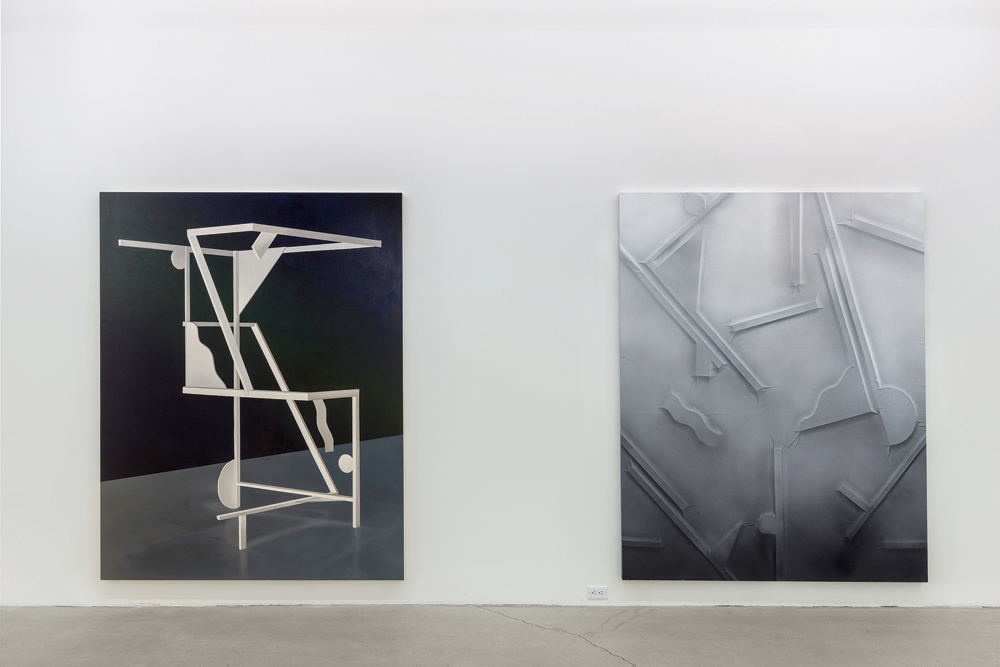This is an article from the Spring 2015 issue of Canadian Art.
In Anthony Burnham’s most recent solo exhibition at Galerie René Blouin, layers and folds compounded to create an expanse beyond the simplistic trope of illusionistic space. These layers register as an abstraction based on perception and the specificity provided by point of view, establishing a symbiotic relationship toward an image of the exhibition as a whole.
Although almost all of the paintings in Burnham’s exhibition share the same subject matter, we quickly recognize two very distinct approaches in the translation of the subject onto the two-dimensional plane of the canvas. As such, we become acutely aware of not only the juxtaposition between these methods, but also, perhaps more crucially, the (negative) space left open within the perceptual leap from one image to the next.
The recurrent subject/motif of these works consists of a crudely assembled angular construction, which evokes early Modernism through its formal language. In the first suite of paintings, the subject is approached as a still-life that is treated with a Morandi-esque curiosity and persistence, in effect rendering the subject arbitrary through its insistent repetition. We see depictions of the same rudimentary construction approached from a variety of angles, treated with an assortment of colour combinations, and occupying the limitations of alternating canvas sizes.
In the second suite of works, we become witness to the dismantling and collapse of not only the physical structure that is the subject, but also the pictorial space within which it resides. Burnham has taken apart the various components of this sculptural subject, laid them flat under a suctioned canvas (made with a refined DIY in-studio vacuum machine) and sprayed them to accent their spatial shadow and depth.
The hollow cast of the space between these structural components gives way to their recognition and, as such, they function as negatives of the subject at hand. Akin to the rayographs of Man Ray, these works assume the physical trace of the object through a layer of abstraction.
It is through this veil of abstraction and the impression of the hollow-cast object that we are provided with an opening onto the nuance of its true materiality. It is the ability to assume the negative space of the given mould that grants this mobilization. This opening is much like the veil that gets instated in Giuseppe Sanmartino’s Baroque masterpiece in marble known as the Veiled Christ (1753), which, like Burnham’s spray paintings, provides an envelope onto materiality through layered deformation, simultaneously obscuring and revealing.

 Anthony Burnham, Performing multiple orientations and Full repeatable view 014 (installation view), 2014.
Anthony Burnham, Performing multiple orientations and Full repeatable view 014 (installation view), 2014.







